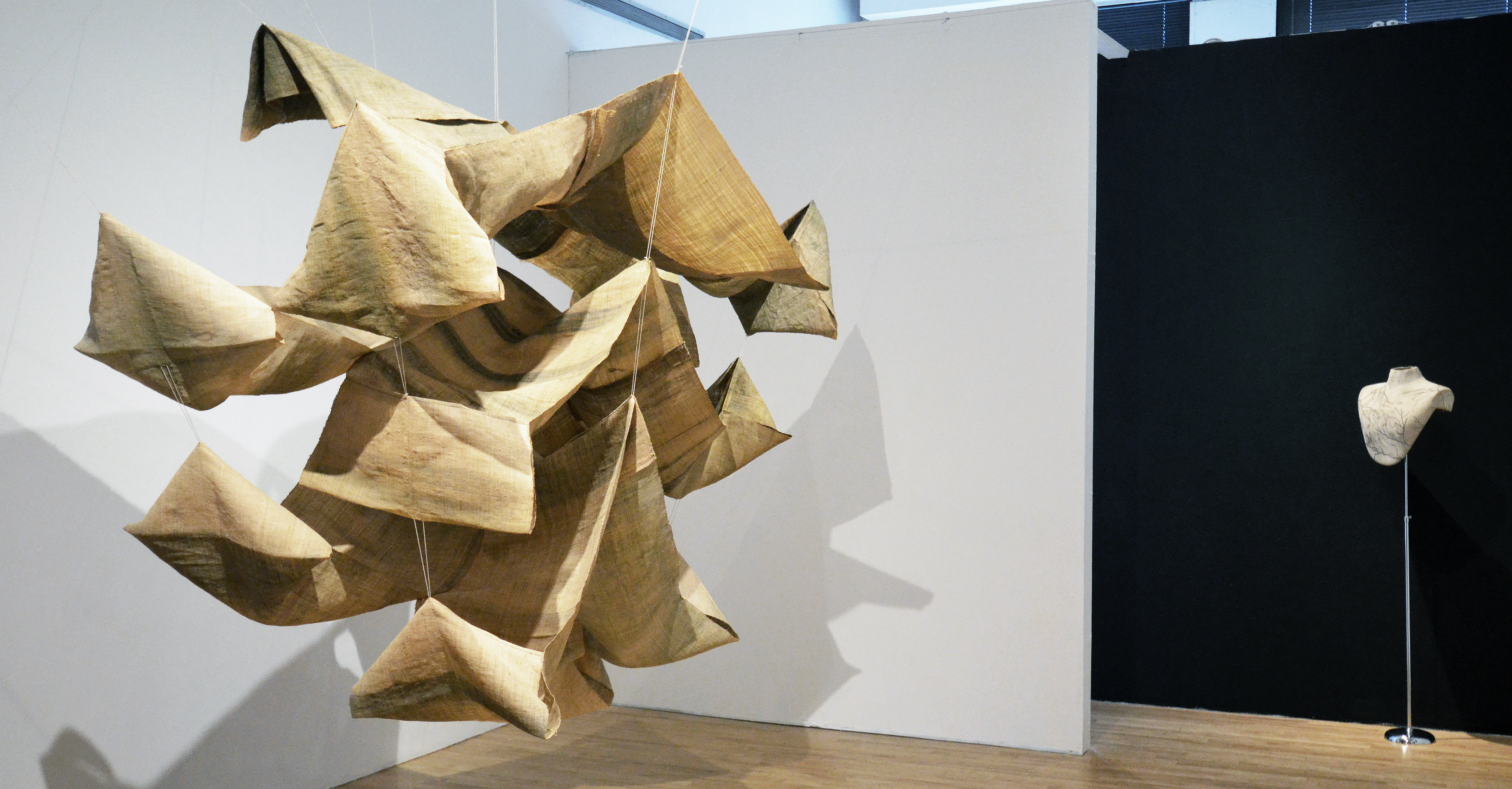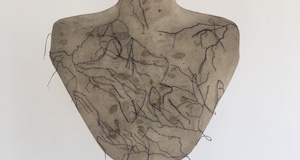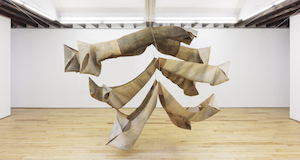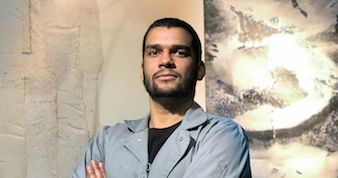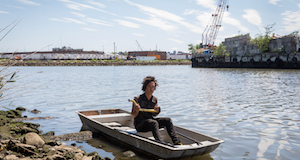Tracing Obsolescence brings together four artists who explore the material and psychic traces left by declining industrial-scale manufacturing and extraction. Through printmaking, sculpture, installation, and performance, they attend to goods that have been discarded, places that are abandoned, and memories that seem forgotten. In so doing, they question the finality of obsolescence, reactivating materials and intervening in processes of deterioration in order to investigate contemporary environmental, socio-economic, and geo-political crises.
Tahir Karmali explores abusive mining practices in Africa, as well as disposable consumerism; he ritually deconstructs discarded technologies such as old mobile phones to obtain substances like cobalt and copper, disrupting their typical path toward the trash heap. Sto Len makes monoprints directly from the polluted waterways of New York City’s Newtown Creek, drawing attention to environmental problems of urban post-industrial wastelands by repurposing their effluence in-situ as an artistic medium. Selasi Awusi Sosu uses video and sound to create ghostly holographic re-stagings of the now defunct glass bottle manufacturing process in Ghana, while Dana Whabira’s installation highlights the rise of automation and the fall of machinery, technology and people that have become redundant or terminated.
Together, these artists’ works propose non-linear, context-embedded ways of tracing obsolescence in post-industrial landscapes, revealing material circuits and trajectories which may be redirected to create unexpected, problematic, and mysterious beauty.
Tahir Karmali explores abusive mining practices in Africa, as well as disposable consumerism; he ritually deconstructs discarded technologies such as old mobile phones to obtain substances like cobalt and copper, disrupting their typical path toward the trash heap. Sto Len makes monoprints directly from the polluted waterways of New York City’s Newtown Creek, drawing attention to environmental problems of urban post-industrial wastelands by repurposing their effluence in-situ as an artistic medium. Selasi Awusi Sosu uses video and sound to create ghostly holographic re-stagings of the now defunct glass bottle manufacturing process in Ghana, while Dana Whabira’s installation highlights the rise of automation and the fall of machinery, technology and people that have become redundant or terminated.
Together, these artists’ works propose non-linear, context-embedded ways of tracing obsolescence in post-industrial landscapes, revealing material circuits and trajectories which may be redirected to create unexpected, problematic, and mysterious beauty.
Evelyn Owen is a writer and curator based in New York City. A cultural geographer by training, her research explores contested geographical imaginations, especially in relation to contemporary art from Africa and its Diaspora. She is currently the Curatorial Fellow at The Africa Center, NYC. Her writing has been published by The Guardian, FOAM, Contemporary&, Okayafrica, 1-54, and Africa is a Country. She received her PhD with a thesis on the geographies of contemporary African art from Queen Mary, University of London.


